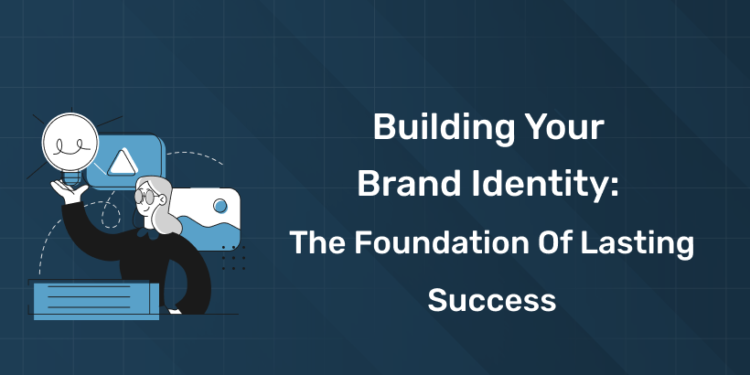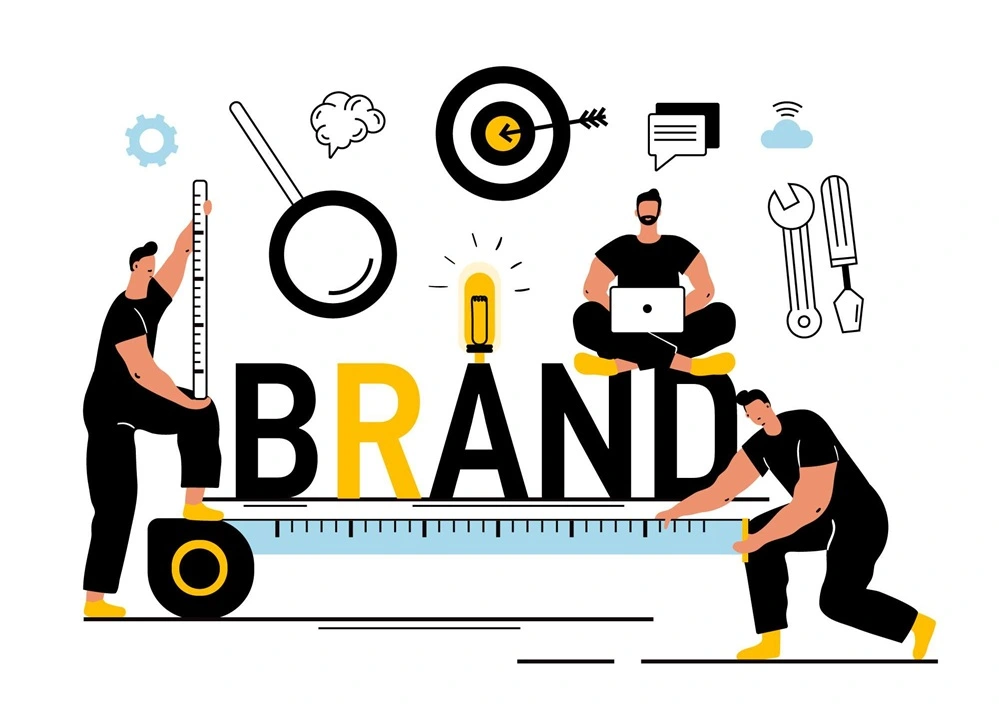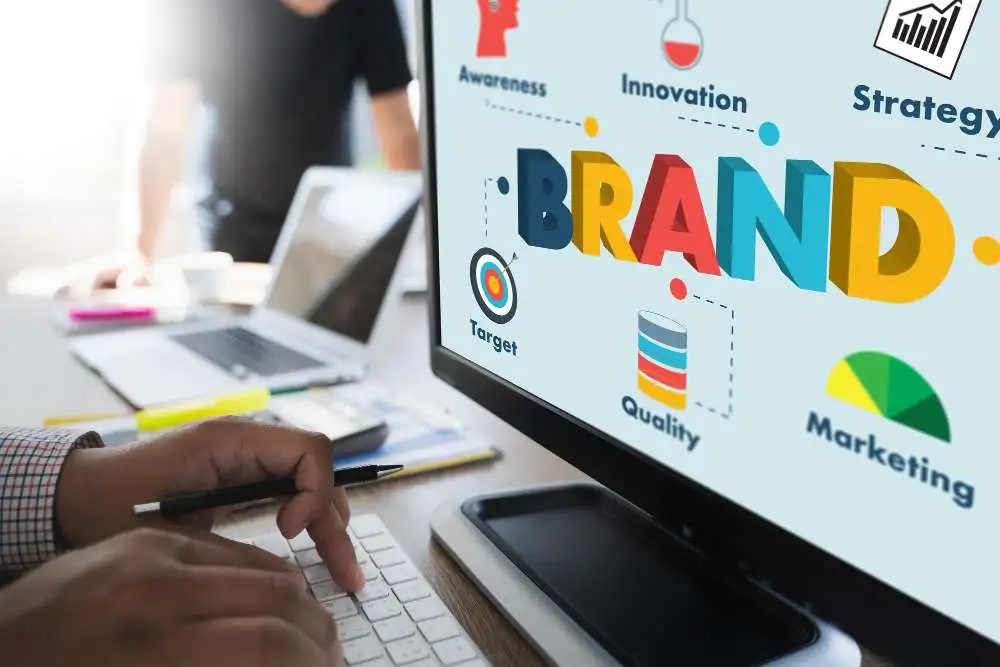Table of Contents
If you’re launching or entering the digital marketing or entrepreneur sphere, developing a brand identity is not a choice; it’s essential. Once you know who you are, what you believe in and what you sound and look like, all the rest falls into place more fluidly: your site, your content, your marketing, your audience. In this blog, we’ll guide you through what brand identity is, why it matters, and how to build it step-by-step.
Join Our Online Digital Marketing Course & Learn the Fundamentals!
What is Brand Identity?
At its essence, brand identity is the combination of the visual, verbal and experiential components that characterise how your brand is perceived and experienced by your audience. Brand identity, per another definition, “encompasses all the ways customers engage with and see a business – from visual components such as logos, to customer‑service touchpoints and advertising copy.”
Brand is not only the logo or the colours, it’s all that you say, your tone of voice, your values, your story, your typography, your photography, your customer experience. It’s how you want people to know and remember you.
Here’s a good breakdown:
- The visual component: logo, colours, fonts, imagery.
- The verbal part: name, tagline/slogan, voice, messaging.
- The experiential/operational component: how you provide service, how you act, your internal culture, your consistency.
When these converge and are uniform across touch‑points, you build trust and build recognition and differentiation.
Why Brand Identity Is Important ?
1: What is the primary goal of SEO (Search Engine Optimization)?
And because you’re constructing a brand from the ground up, this is why identity matters so much.
- Differentiation: In a saturated market, folks don’t simply purchase what you do. they purchase for what you do and how you demonstrate it. A hard personality makes you distinctive.
- Recognition & recall: When you show up consistently (same colours, tone, look, vibe), your audience starts recognising you and remembering you. That builds brand equity.
- Trust & loyalty: Consistency and authenticity build trust. Whenbrand is the same as promise, folks keep coming back.
- Foundation for marketing: All you produce, your site, your content, your social presence, follows your brand identity. It makes your marketing more crisp and effective.
- Internal alignment & clarity: For founders and small teams, clarity around identity keeps everyone on the same page. What you say, how you look, what you deliver, all match up.
So instead of considering brand identity as “just the pretty stuff”, consider it your strategic asset. It’s the filter with which you approach everything else.
Become an AI-powered Digital Marketing Expert
Master AI-Driven Digital Marketing: Learn Core Skills and Tools to Lead the Industry!
Explore CourseThe Step‑by‑Step Process to Build Your Brand Identity
Let’s walk through a process you can follow, simple but rigorous enough to give you a strong identity.
Step 1: Define Your Brand Foundation
Before you start picking colours and fonts, get clear on your why, who and what.
- Purpose/mission: Why does your brand exist? What change are you trying to make?
- Values: What do you stand for? What will you not compromise on?
- Target audience: Who are you speaking to? What are their needs, pain points, desires?
- Positioning: How do you want to be different in the minds of your audience? What promise are you making?
This foundational work is something your pillar page How to Build a Brand from Scratch likely covers, and brand identity is the next logical step.
Step 2: Audit the Current Landscape
- Look at competitors: what they are doing, how they present themselves.
- Look at what your audience expects and how they behave. What gaps or unmet needs exist?
- Map your brand’s unique space: What do you do that they don’t? What emotion or value can you deliver that others ignore?
Step 3: Craft Your Brand Personality & Voice
Think of your brand as a person. How would it speak? Write a few adjectives to define its personality, such as “friendly but expert”, “bold but approachable”, “creative but structured”.
Then decide your tone of voice: will you be conversational, formal, playful, serious, quirky? This will guide how you write copy, speak on social media, answer queries.
Step 4: Create Visual Identity Elements
Now we get into the look and feel:
- Logo: A clear, memorable symbol or wordmark.
- Colour palette: Choose primary and secondary colours. You’ll want emotion‑based choices (for example: blue for trust, green for growth, etc).
- Typography: Fonts that reflect your personality and work online/offline.
- Imagery & graphics style: What kinds of photos or illustrations will you use? Will you use minimalistic design, or bold, expressive visuals?
- Other design assets: Patterns, iconography, layout style, etc.
Step 5: Develop Brand Guidelines
Once you have your visual and verbal elements, document them. A brand‑style guide makes sure you’re consistent across touch‑points. According to design best‑practice:
- Simplicity and consistency matter.
- Make sure your visuals & voice carry across different media and sizes (mobile, web, print).
- Ensure anyone who uses your brand (including you!) follows the guidelines.
Step 6: Apply Your Brand Identity Everywhere
It’s not enough to have a guide, you must apply it.
- Website: logo, colours, fonts, imagery, tone all reflect your identity.
- Social media: profile icons, cover images, post styles, captions.
- Marketing materials: emails, flyers, digital ads, presentations.
- Customer experience: how you respond, how you package your product, how you serve.
Offline if relevant too: packaging, signage, business cards, etc.
Step 7: Monitor, Evolve & Maintain
A brand is not “set and forget”. Markets change, audiences shift, trends evolve. Good practice:
- Collect feedback: how do people perceive your brand? Is your identity creating the reaction you want?
- Measure: brand recall, direct traffic, social recognition, consistency across channels.
- Refine: As you grow, you might refresh your identity (not completely rebrand unless needed) but keep the core consistent.
Examples & Practical Tips You Can Use
Example: Let’s say you’re launching “Creative Corner”, a brand that offers workshops & consultancy to designers and solopreneurs.
- Purpose: Empower creative solopreneurs to build personal brands with ease.
- Values: Creativity, accessibility, mentorship, authenticity.
- Audience: Emerging designers, freelancers, creative consultants.
- Positioning: The friendly yet professional partner for creatives who want branding help without intimidating jargon.
- Personality & Voice: Friendly, supportive, slightly playful but always professional.
- Visual Identity: Logo with a simple icon (a pencil plus lightbulb), palette of turquoise + charcoal + white, fonts: clean sans‑serif for body, hand‑script for accent (to hint creativity).
- Imagery: Behind‑the‑scenes studio shots, sketches, open‑workspace photos; no overly corporate stock images.
- Guidelines: Everyone posting on social uses the same turquoise for highlight, uses the brand’s script font for quotes, never uses red colour (that’s not in palette), etc.
- Application: Website header uses a turquoise banner, social posts have a consistent layout, email signature uses logo and the brand voice.
- Monitor: After 6 months, check if people say “Creative Corner” looks/feels the same across media, check which posts get the best engagement, survey your audience: “What comes to mind when you see our branding?”
- Evolve: Maybe after 18 months, you see your minimal palette is too muted for your audience, adjust accent colour to a brighter coral while keeping the core elements.
Practical Tips:
- Don’t chase trends blindly, pick visual styles that reflect you and your audience, then stay consistent.
- Make sure your logo works in black & white as well as colour (for print).
- Pick your palette and typography early and use them consistently, inconsistency undermines recognition.
- Use your brand personality in every piece of communication: website copy, social captions, emails.
- When in doubt, ask: “Does this reflect our brand identity?” If not, adjust.
- Consider how you look on mobile, how your visuals scale, consistency matters across platforms.
- Use tools: mood‑boards, style‑tile, templates. Having a brand kit helps especially when you outsource or grow your team.
Become an AI-powered Digital Marketing Expert
Master AI-Driven Digital Marketing: Learn Core Skills and Tools to Lead the Industry!
Explore CourseHow the Entri AI‑Powered Digital Marketing Course Supports This Journey
Since you’re reading this as someone interested in building a brand from scratch, or as a digital‑marketing aspirant, here’s how the Entri AI‑Powered Digital Marketing Course aligns beautifully with your brand‑identity building phase:
- Brand strategy module: The course helps you define your brand foundation (purpose, values, audience, positioning) via guided frameworks and AI‑powered exercises.
- Identity creation module: It walks you through how to pick your colours, fonts, imagery, layout, voice, often giving templates and design guidelines.
- Content & marketing alignment: Once your identity is ready, the course shows you how to apply it in digital channels (website, social, email), and how to keep brand consistency across touch‑points.
- AI tools and automation: The “AI‑Powered” bit means you get help generating on‑brand copy, selecting visuals aligned with your brand palette, automating social posts that reflect your brand voice, saving time and ensuring consistency.
- Measurement & analytics: The course also covers how to measure brand‑recognition, how to track how people react to your branding, and how to refine.
- Practical case studies: You’ll see examples of startups and solopreneurs brand‑building successfully, and how they evolved.
In short: once you’ve done your brand‑identity work, the Entri course helps you use that identity to create content, market effectively, and grow your brand, rather than leaving your identity stuck on paper.
Common Mistakes to Avoid in Brand Identity
As you build your identity, avoid these traps:
- Treating identity as only the logo and colours: That’s just the surface, the deeper parts (voice, experience, consistency) matter.
- Changing visuals too frequently: Frequent redesigns confuse audiences and reduce brand recall.
- Inconsistency across channels: If website says one thing, social looks different, and packaging another, you dilute your brand.
- Copying other brands too closely: Inspiration is fine; mimicry undermines your uniqueness and can lead to brand confusion.
- Neglecting internal alignment: If team, service, customer‑experience don’t reflect the brand identity, credibility drops.
- Ignoring audience feedback: Your brand identity is not just what you think it is but how your audience perceives it. Adjust accordingly.
- Fixating on trend over authenticity: Trendy visuals may look good now, but your brand should reflect your purpose and long‑term vision.
Integrating Brand Identity into Your Brand‑Building Journey
Since you’ve built your pillar page “How to Build a Brand from Scratch”, here’s how this brand‑identity blog fits into your content cluster and brand‑building journey:
- Pillar page: “How to Build a Brand from Scratch” – gives the full framework and big picture.
- Cluster page (this blog): “Building Your Brand Identity” – deep dive into the identity stage (foundation, visuals, voice).
- Next cluster pages might include:
- “Buying a Domain & Hosting” (your next topic)
- “Creating a Content Strategy That Reflects Your Brand Identity”
- “Launching Your Brand Online: Website, Social & First Campaign”
- “Measuring Brand‑Recognition & Growing Your Brand”
- “Using AI in Digital Marketing for Your Brand” (aligns with Entri course)
By structuring like this, you give your audience a logical progression: from the big vision → to identity → to infrastructure → to marketing → to scaling. Each blog supports the next.
Key Takeaways
- Your brand identity is way more than just a pretty logo or some catchy colours – it’s the heart and soul of your business, your purpose, the way you speak & sound, the way you look & the experience you offer to the world and the consistency with which you show up.
- For a brand that’s being built from the ground up, your identity is basically your ace in the hole – it helps you stand out, get noticed and set a solid foundation for everything else that follows.
- The process looks something like this: figuring out your foundation → taking stock of what’s out there → working out what kind of personality & voice you want to have → deciding on the visual elements that fit with that → laying down the law with some design guidelines → getting the word out everywhere → keeping an eye on how it’s all going & being willing to tweak it as you go.
- A bit of practical advice: think of your brand as a real person – choose how they look & sound, & then make sure every single appearance fits with that image.
- On the other hand, you’re going to want to avoid all the common traps that brands fall into – inconsistency, redesigning too frequently, just scratching the surface, copying off others & ignoring what your audience actually thinks about you.
- And the thing is, building your identity is basically setting yourself up for the next phase: building presence, doing some marketing, & then growing. Without it, you’ll be stuck with a lack of clarity, no consistency, and a whole lot of wasted effort.
Final Note & Call to Action
If you’re serious about building a brand from scratch, take the time now to build your identity right. It might feel slower than jumping straight into “We need a website”, but that investment will pay off in clarity, consistency, and results. And if you want guided support, frameworks, templates, and AI‑powered tools, then exploring the Entri AI‑Powered Digital Marketing Course is your next smart step.
Frequently Asked Questions
What is brand identity and why is it important?
Brand identity is the visual, verbal, and emotional personality of your business that makes it memorable and trustworthy. It’s important because it differentiates you from competitors and builds lasting connections with your audience.
How do I start building my brand identity?
Start by defining your mission, vision, and core values, then create a consistent visual style (logo, colors, fonts) and a clear brand voice that resonates with your target audience.
How can I ensure my brand identity is consistent?
Create a brand style guide covering logo usage, color palette, fonts, and tone of voice, and use it across all your marketing materials and digital platforms.
Can my brand identity evolve over time?
Yes. As your business grows and market demands change, refining your brand identity based on feedback and trends helps maintain relevance and audience engagement.
How can digital marketing skills help in brand identity building?
Digital marketing skills help you strategize, communicate, and amplify your brand identity through SEO, social media, content marketing, and paid ads effectively. Courses like Entri’s AI-powered Digital Marketing Course offer hands-on training in these areas.














